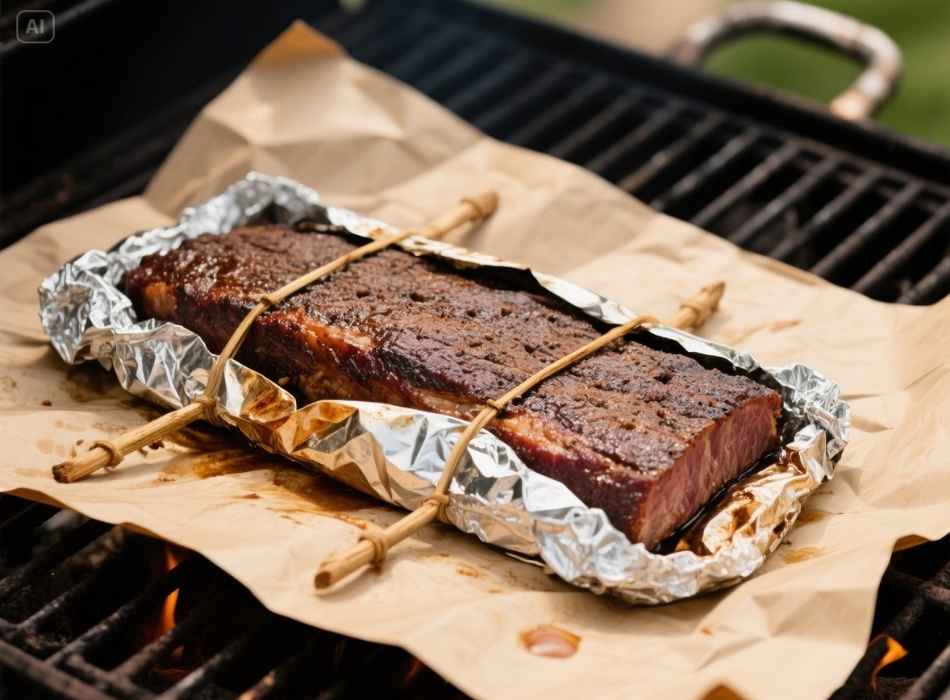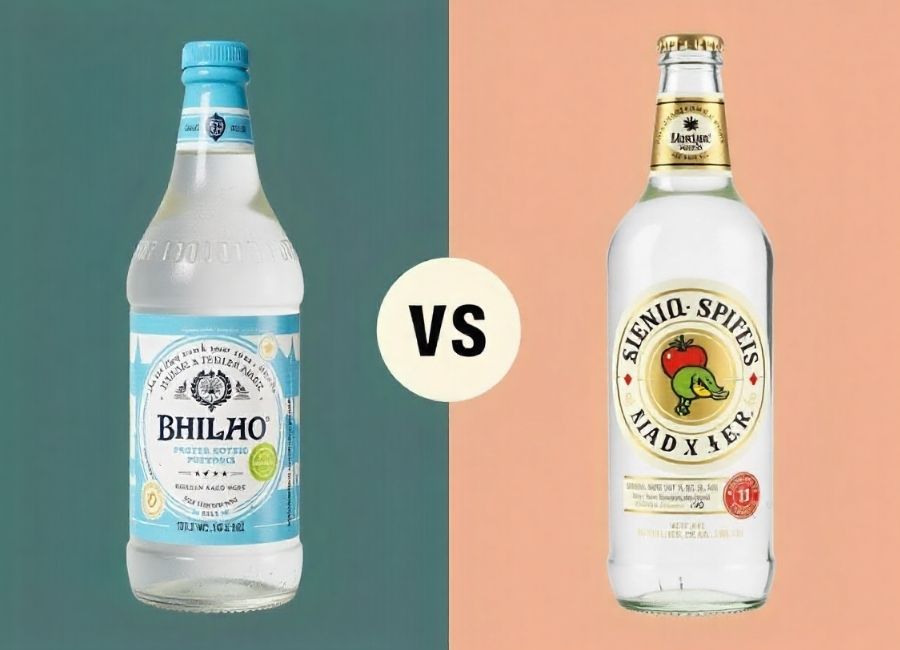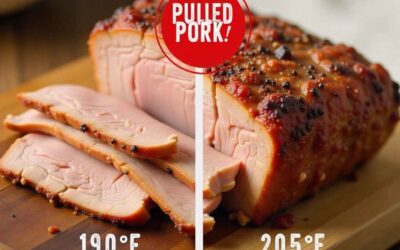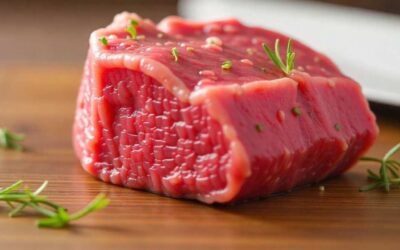Wrapping a brisket is one of the most debated techniques in barbecue. Timing and technique are essential for seasoned pitmasters and weekend grill warriors to achieve that perfect smoky flavor, tender texture, and mouthwatering bark balance. If you’ve ever wondered when or why to wrap your brisket, this guide will walk you through everything you need to know. From understanding the infamous “stall” to exploring different wrapping options, we’ve got you covered.
What Is the Stall and Why Does It Happen?
The “stall” is a well-known phenomenon that every brisket cook will encounter at some point. Picture this: your brisket is cooking beautifully, the internal temperature is steadily rising, and then suddenly, it plateaus. The thermometer needle barely moves for hours, leaving you frustrated and questioning your barbecue skills.
This stall occurs due to evaporative cooling. As the moisture in the brisket evaporates, it cools the surface of the meat, counteracting the rising heat. This process is similar to how sweating cools your body. This process can delay the cooking, adding precious hours to your cook time. The stall can turn a simple barbecue into an all-day ordeal without intervention.
Enter the Texas Crutch

Many pitmasters turn to the Texas Crutch technique to tackle the stall. This technique involves tightly wrapping the brisket in foil or butcher paper to lock in moisture and reduce evaporation. Wrapping helps push the internal temperature past the stall more quickly, saving time without sacrificing tenderness.
Benefits of the Texas Crutch:
- Shortened Cooking Time: By reducing evaporative cooling, the brisket cooks faster.
- Moisture Retention: Wrapping traps juices, keeps the meat moist, and prevents drying.
- More Reliable Results: The technique helps ensure your brisket reaches the desired tenderness, even if you’re less experienced.
- Less Chance of Error: Wrapping helps prevent overcooking and drying out the brisket, giving you a wider margin for error.
- Increased Smoke Flavor: The foil or butcher paper traps more smoke around the meat, intensifying its flavor.
- Added Moisture: Wrapping with a liquid (such as beef broth) can further enhance moisture and flavor.
- Beautiful Bark Formation: By limiting airflow, wrapping encourages bark formation, adding texture and flavor to the finished product.
Experimenting with Texas Crutch Variations

While the traditional method involves wrapping the brisket in foil or butcher paper, some variations can yield similar results. Here are some techniques to experiment with when using the Texas Crutch:
- Parchment Paper: Some pitmasters swear by this versatile cooking paper as an alternative to foil or butcher paper. It allows for some airflow while still retaining moisture and creating bark.
- Aluminum Foil Tenting: Instead of fully wrapping the brisket, try tenting it with foil to create a similar effect. This can be achieved by folding a large piece of foil into a tent shape over the meat.
- Butcher Paper “X” WrapButcher Paper “X” Wrap: To achieve both moisture and bark formation, wrap the brisket in butcher paper in an “X” pattern. This will provide enough coverage to keep moisture in while allowing some airflow.
- Spritzing: Spraying the brisket with apple juice and cider vinegar every hour can help create a moist environment and aid in bark formation. Just be careful not to oversaturate the meat.
- Resting: Once the brisket is finished cooking, it’s essential to rest for at least 30 minutes before slicing into it. This allows the juices to redistribute throughout the meat, resulting in a more tender and juicy end product.
Overall, achieving perfect barbecue brisket takes time, patience, and experimentation. Don’t be afraid to try different methods and techniques until you find what works best for you and your smoker. And remember, the key to great barbecue is low and slow cooking with lots of smoke. So fire up that smoker and get ready to impress your friends and family with a fantastic brisket! Happy smoking!
Choosing Your Wrapping Material

Once you’ve decided to wrap your brisket, the next question is what to wrap it in. The two most popular options are aluminum foil and butcher paper, each with pros and cons.
Aluminum Foil (aka “The Foil Boat”)
Foil is an airtight wrap that locks in moisture completely. It’s like giving your brisket a sauna treatment.
Pros:
- Provides maximum moisture retention.
- Speeds up cooking time by trapping heat.
- Cons: – Can soften the bark, which some barbecue lovers find disappointing. – Doesn’t allow much smoke penetration after wrapping.
Butcher Paper
Butcher paper, often uncoated and breathable, balances moisture retention and bark preservation.
Pros:
- Allows steam to escape, preventing the bark from becoming soggy.
- Let some smoke flavor continue to infuse the meat.
- The cons are that it offers less moisture retention than foil and may require a longer cooking time.
Your choice largely depends on your preferences. If you prioritize a tender, moist brisket, foil may be your best bet. If bark quality is non-negotiable, butcher paper is the way to go.
Timing Is Everything
Knowing when to wrap your brisket is crucial for success. Most pitmasters recommend wrapping when the brisket’s internal temperature reaches 150°F to 170°F. This typically coincides with the beginning of the stall.
To check the temperature, insert a reliable meat thermometer into the thickest part of the flat (the thinner section of the brisket). Once the temperature hits the target range and stops rising, it’s time to wrap.
Steps to Wrap:
- Lay out a large sheet of foil or butcher paper.
- Place the brisket in the center and tightly fold or roll the material around it, sealing all edges.
- Return the wrapped brisket to the smoker and continue cooking until the internal temperature reaches 200°F to 205°F, the sweet spot for tenderness.
Tips for Maintaining Bark Quality

One common concern when wrapping is losing that prized, smoky, caramelized bark. While wrapping inevitably impacts texture to some extent, you can take steps to minimize this:
- Keep Wrapping Tight: Ensure there’s no excess air inside the wrap, as this can create steam and compromise the bark.
- Use Butcher Paper: It’s a better choice for bark preservation.
- Leave Unwrapped Longer: Wait as long as possible before wrapping to allow the bark to form fully before locking in moisture.
Alternatively, if you’re protective of your bark, you can unwrap the brisket during the final 30 minutes of cooking to dry out the surface slightly.
Wrapping and Cooking Time
Wrapping not only saves time but also ensures a more consistent cooking experience. With the Texas Crutch, you can shave off 1 to 2 hours from the total cook time, depending on the size of your brisket and your cooking temperature. Remember that the wrapped brisket will cook faster because the trapped steam regulates the temperature and prevents cooling.
Adjust your schedule, especially if preparing for a specific mealtime or event.
Alternatives to Wrapping
While wrapping is a widespread technique, it’s not the only way to tackle the stall. Here are some alternative methods:
The Patience Route:
Wait it out. Unwrapped brisket will eventually push past the stall, requiring more time and patience. The upside? The bark remains untouched and develops a more profound flavor.
Higher Smoking Temperatures:
Increasing your smoker temperature (e.g., from 225°F to 275°F) can speed up the process without wrapping. However, this may affect the overall texture and smoke absorption.
Resting the Brisket:
If you’re concerned about overcooking or drying out the brisket, you can rest it for an extended period after cooking. Wrap it in clean foil or butcher paper and place it in a cooler to keep it warm. This allows the juices to redistribute and the meat to relax, resulting in a more tender and juicy brisket.
Adding a Finishing Glaze:
Apply a finishing glaze during the last hour of cooking to add extra flavor and moisture to your brisket. This could be a simple mixture of melted butter, honey, and BBQ sauce, or you can get creative with different spices and ingredients. Just make sure not to overdo it, as too much glaze can overpower the meat’s natural flavors.
Experimenting with Different Woods:
While traditional woods like hickory and mesquite are commonly used for smoking brisket, don’t be afraid to branch out and try different types of wood. Each wood type has its unique flavor profile, so it’s worth experimenting to find your favorite combination. Some popular options include applewood, cherrywood, and oak.
Slicing Techniques:
How you slice it can make a big difference in the texture and overall taste of serving brisket. It’s important to slice against the grain for maximum tenderness, which means cutting perpendicular to the direction of the muscle fibers. Additionally, you can choose between slicing thin or thick cuts, depending on your personal preference.
Creative Side Dishes:
While brisket is undoubtedly the star of any BBQ meal, it’s always fun to come up with creative and tasty side dishes to complement the main dish. Some popular options include mac and cheese, coleslaw, baked beans, and cornbread. However, don’t be afraid to think outside the box and try something new, like grilled vegetables or a refreshing summer salad.
Leftover Ideas:
Brisket is known for being a large cut of meat that can feed a crowd. This means you’ll likely have leftovers after your BBQ feast. Don’t worry, though, as there are many delicious ways to use extra brisket. Some ideas include shredding it for tacos or sandwiches, adding it to soups or stews, or even using it as a topping for pizza. Get creative and experiment with different ways to enjoy your leftover brisket.
Marinade Variations:
While the classic BBQ brisket marinade typically consists of a blend of spices, Worcestershire sauce, and vinegar, there are many variations you can try to add new flavors to your dish. For instance, you could add sweetness by incorporating honey or brown sugar into the marinade. You could also spice things up with chili powder, hot sauce, or cayenne pepper. Don’t be afraid to mix and match ingredients to create a unique marinade that suits your taste buds.
Wrapping Up Your Brisket Journey
Wrapping brisket can feel like a fine art, but with the right timing, materials, and techniques, you can master it quickly. Whether you’re a fan of using foil for maximum moisture or butcher paper for a balanced approach, wrapping helps overcome the dreaded stall while delivering tender, flavorful results.
Experiment with the Texas Crutch and other techniques until you find the best method that suits your personal barbecue preferences. Remember, barbecue is as much a process of discovery as it is a craft. Keep learning, experimenting, and most importantly, enjoy every delicious bite.
Happy Smoking!



















